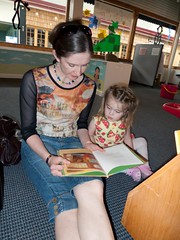
The phrase “you are what you eat” may refer to more than your physical make-up. In fact, the food in your fridge might say just as much about your social class as about your health. Newsweek reports:
According to data released last week by the U.S. Department of Agriculture, 17 percent of Americans—more than 50 million people—live in households that are “food insecure,” a term that means a family sometimes runs out of money to buy food, or it sometimes runs out of food before it can get more money. Food insecurity is especially high in households headed by a single mother. It is most severe in the South, and in big cities. In New York City, 1.4 million people are food insecure, and 257,000 of them live near me, in Brooklyn. Food insecurity is linked, of course, to other economic measures like housing and employment, so it surprised no one that the biggest surge in food insecurity since the agency established the measure in 1995 occurred between 2007 and 2008, at the start of the economic downturn.
Growing inequality between the rich and the poor in the United States is reflected at the dinner table as well:
Among the lowest quintile of American families, mean household income has held relatively steady between $10,000 and $13,000 for the past two decades (in inflation-adjusted dollars); among the highest, income has jumped 20 percent to $170,800 over the same period, according to census data. What this means, in practical terms, is that the richest Americans can afford to buy berries out of season at Whole Foods—the upscale grocery chain that recently reported a 58 percent increase in its quarterly profits—while the food insecure often eat what they can: highly caloric, mass-produced foods like pizza and packaged cakes that fill them up quickly.
Using language evocative of sociologist Pierre Bourdieu, one epidemiologist explains:
Lower-income families don’t subsist on junk food and fast food because they lack nutritional education, as some have argued. And though many poor neighborhoods are, indeed, food deserts—meaning that the people who live there don’t have access to a well-stocked supermarket—many are not. Lower-income families choose sugary, fat, and processed foods because they’re cheaper—and because they taste good. In a paper published last spring, Drewnowski showed how the prices of specific foods changed between 2004 and 2008 based on data from Seattle-area supermarkets. While food prices overall rose about 25 percent, the most nutritious foods (red peppers, raw oysters, spinach, mustard greens, romaine lettuce) rose 29 percent, while the least nutritious foods (white sugar, hard candy, jelly beans, and cola) rose just 16 percent.
“In America,” Drewnowski wrote in an e-mail, “food has become the premier marker of social distinctions, that is to say—social class. It used to be clothing and fashion, but no longer, now that ‘luxury’ has become affordable and available to all.”
Concern about rising obesity, especially among low income communities, had led to some controversial policy proposals.
In recent weeks the news in New York City has been full with a controversial proposal to ban food-stamp recipients from using their government money to buy soda. Local public-health officials insist they need to be more proactive about slowing obesity; a recent study found that 40 percent of the children in New York City’s kindergarten through eighth-grade classrooms were either overweight or obese. (Nationwide, 36 percent of 6- to 11-year-olds are overweight or obese.)
But French sociologist Claude Fischler suggests that there might be a better way to address both food insecurity and obesity: Americans should be more French about food.
Americans take an approach to food and eating that is unlike any other people in history. For one thing, we regard food primarily as (good or bad) nutrition. When asked “What is eating well?” Americans generally answer in the language of daily allowances: they talk about calories and carbs, fats, and sugars. They don’t see eating as a social activity, and they don’t see food—as it has been seen for millennia—as a shared resource, like a loaf of bread passed around the table. When asked “What is eating well?” the French inevitably answer in terms of “conviviality”: togetherness, intimacy, and good tastes unfolding in a predictable way.
Even more idiosyncratic than our obsession with nutrition, says Fischler, is that Americans see food choice as a matter of personal freedom, an inalienable right. Americans want to eat what they want: morels or Big Macs. They want to eat where they want, in the car or alfresco. And they want to eat when they want. With the exception of Thanksgiving, when most of us dine off the same turkey menu, we are food libertarians. In surveys, Fischler has found no single time of day (or night) when Americans predictably sit together and eat. By contrast, 54 percent of the French dine at 12:30 each day. Only 9.5 percent of the French are obese.
Others suggest addressing systematic barriers to food accessibility and delivery. According to author and foodie icon Micahel Pollan:
“Essentially,” he says, “we have a system where wealthy farmers feed the poor crap and poor farmers feed the wealthy high-quality food.” He points to Walmart’s recent announcement of a program that will put more locally grown food on its shelves as an indication that big retailers are looking to sell fresh produce in a scalable way. These fruits and vegetables might not be organic, but the goal, says Pollan, is not to be absolutist in one’s food ideology. “I argue for being conscious,” he says, “but perfectionism is an enemy of progress.”
Community activists agree:
Food co-ops and community-garden associations are doing better urban outreach. Municipalities are establishing bus routes between poor neighborhoods and those where well-stocked supermarkets exist.
Joel Berg, executive director of the New York City Coalition Against Hunger, says these programs are good, but they need to go much, much further. He believes, like Fischler, that the answer lies in seeing food more as a shared resource, like water, than as a consumer product, like shoes. “It’s a nuanced conversation, but I think ‘local’ or ‘organic’ as the shorthand for all things good is way too simplistic,” says Berg. “I think we need a broader conversation about scale, working conditions, and environmental impact. It’s a little too much of people buying easy virtue.”re as well,” Berg says…
Berg believes that part of the answer lies in working with Big Food. The food industry hasn’t been entirely bad: it developed the technology to bring apples to Wisconsin in the middle of winter, after all. It could surely make sustainably produced fruits and vegetables affordable and available. “We need to bring social justice to bigger agriculture as well,” Berg says.






 A new study finds that it now costs approximately $60,000 a year for a family of four to survive in Philadelphia without government assistance, reports
A new study finds that it now costs approximately $60,000 a year for a family of four to survive in Philadelphia without government assistance, reports 